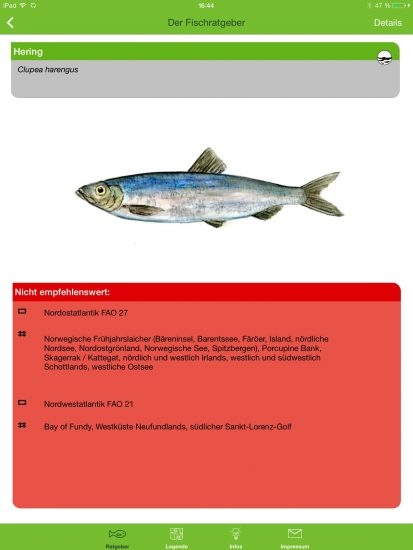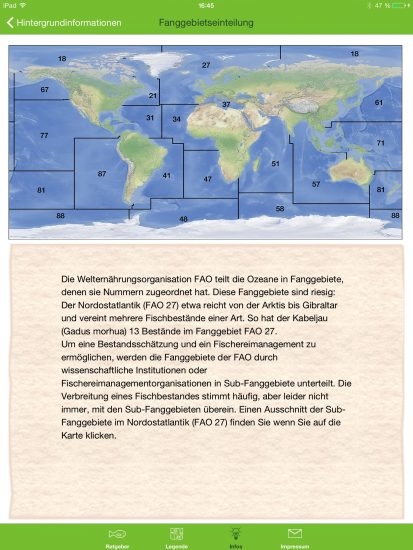Fish Advisor app from Greenpeace
January 29, 2016
The latest edition of the Fish Advisor app from Greenpeace has just been served up, appearing both as a printed guide and an app.
The guidebook and app give users background information on the different fish species found at the supermarket. Based on its recomendations, it appears that the only species that has received the green light in all areas is the carp.
As for the other species, the choice isn't so straightforward. "Many fish farming practices damage the environment significantly. Many stocks are overfished," said Sandra Schöttner, a marine expert from Greenpeace.
She added that to make an environmentally conscious choice when buying fish, one had to consider not just the fish on its own, but where and how it was caught or farmed.
Specifically, the new edition advises against consuming herring from certain regions of northeast and northwest Atlantic, even if it has been classified as "green" in the shopping guide. This includes, among others, the Subfanggebiet from Skagerrak and Kattegat or the western coast of Newfoundland.
For those popular fish stocks that are caught using potentially damaging methods (like Pacific salmon from the northeast Pacific, which are caught using purse seines, trolling or gillnets), the guide helps to identify acceptable substitute species. Some species have
been classified as "red", like the eel, mackerel, redfish and the Alaska
pollock. The last species is actually Germany's most consumed fish, and is used in "Schlemmer" Filets and many fish finger products.
According to Schöttner, many fish stocks have been drastically depleted. While individual stocks can recover, overfishing puts our oceans in crisis. The Food and Agriculture Organisation states that 61.5 percent of global fish stocks have been harvested to their
sustainable limits, with 28.8 percent already overexploited or depleted. However, the actual extent of overfishing is actually higher than what the official figures suggest, according to a study by Pauly & Zeller, as published in the scientific journal Nature.
Many fishing methods destroy sensitive ecosystems, and some even cause countless marine animals to end up as by-catch in nets. Hence, the assessment also takes into account the environmental impact
of how the fish had been caught, the origin of the eggs and juveniles, and the feed composition. In all, the guide covers about 115 species, divided into 550 wild fish stocks and 120 countries of origin.
Contribute to marine protection when you shop
According to the Fish Information Centre in Germany, around 1.1 million tonnes of fish and seafood are consumed in Germany every year. This works out to an average of about 14 kilogram’s per person. Schöttner said that everyone can contribute to the protection of the seas. By using the fish guide or app, one will know which fish species are from reliable sustainable sources and which ones are not. Greenpeace calls on the fishing industry and retailers to adopt a
fully sustainable and transparent approach to production, purchasing and sales.
The complimentary pocket-size fish guide can be ordered for free at www.greenpeace.de/fischratgeber. The app is also free, downloadable at Apple App Store or Google Play. More information, as well as recipes from television chef Sarah Wiener, can be found at www.greenpeace.de/fisch.





